What Hi-Fi? Verdict
The gateway to on-demand 4K HDR movies you've been waiting for, now with extra apps and features
Pros
- +
Substantial library of 4K HDR content
- +
Strong picture and sound
- +
Loads of apps
- +
Dolby Vision and Atmos
Cons
- -
Pricier than stick alternatives
Why you can trust What Hi-Fi?
For many, watching Apple CEO Tim Cook on stage at the 2017 launch of the Apple TV 4K, talking about 4K and HDR almost as if they were Apple inventions, was both hilarious and galling. After all, 4K technology was already around when the previous Apple TV launched in 2015, but Apple simply chose to ignore it.
But our irritation proved short-lived, because upon release the Apple TV 4K was clearly one of the best video streamers available.
What’s more, Apple has shown laudable dedication to updating the little black box with AV aficionado-pleasing features that mean it’s no longer one of the best – it simply is the best.
Build
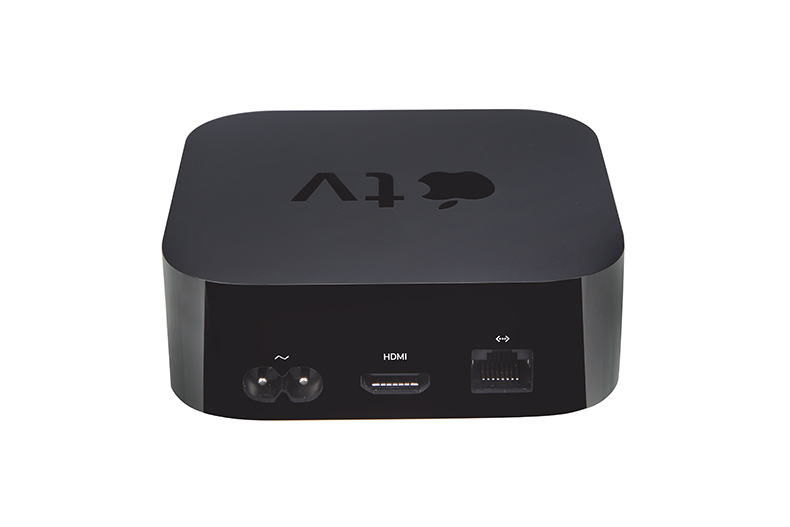
The Apple TV 4K looks almost identical to the previous Apple TV, but flip the little black box over and you’ll notice a ring of small cutouts on the 4K model that weren’t present on its predecessor.
These allow cool air to get to the more powerful A10X chip. It gets warm to the touch while in action, but is extremely quiet – even when playing a game or streaming 4K content.
There’s just 32GB storage in the standard model (£179/$179), and 64GB in the version we have on test here, priced £199/$199.
That sounds paltry, particularly as it can’t be expanded by the addition of an external hard drive – but as the Apple TV 4K doesn’t download movies, TV shows or music, but exclusively streams them, the only storage it needs is for the apps themselves.
The latest hi-fi, home cinema and tech news, reviews, buying advice and deals, direct to your inbox.
The apps tend to be pretty small – Netflix is just 41.6MB, for example – and though games files tend to be significantly bigger (Hitman GO is 1.21GB), the 32GB model should be sufficient for most people.
Features
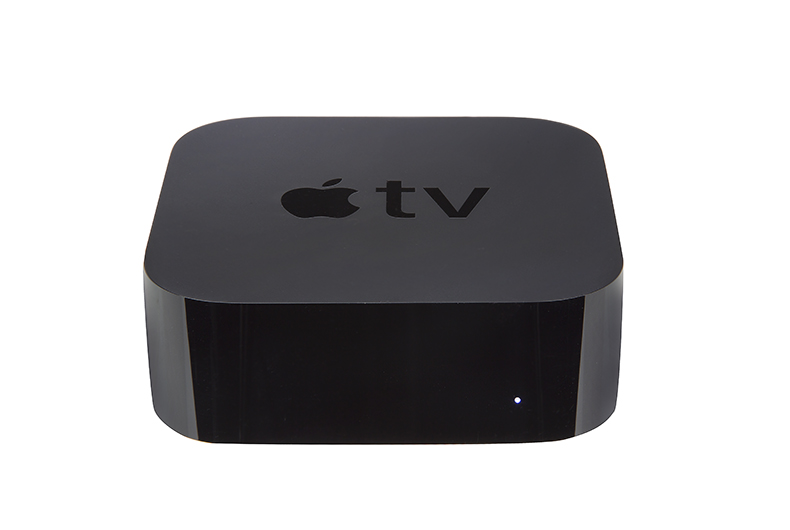
Once switched on, you’re treated to a typically slick Apple experience, particularly if you have an iPhone or other iOS device, which can be used to share all of your account and wi-fi info.
The device detects if your TV supports 4K resolution and adjusts its output accordingly. It also tests for HDR support, sending an HDR signal to the TV. If you can receive it, everything the Apple TV 4K sends to your TV from this point will be in 4K.
Following a post-launch software update, the device no longer upconverts standard dynamic range to HDR and it will now match the native frame-rate of your content. Both are big improvements and well worth activating in the settings.
The menu system itself is neat, clean and intuitive, as you’d expect, and Siri has been cleverly tailored to the video streaming focus, proving more intuitive and useful than the equivalent voice controls of Amazon's streamers and TVs from the likes of LG and Samsung.
Hold the mic button on the sliver of a remote and say “show me action movies” and you are taken directly to the relevant selection in iTunes’ library. Siri is fairly aware of context these days, too, so follow up with “only those in 4K” and the list of action movies will be whittled down to only those available in UHD.
Siri is a powerful search tool, but that contextual awareness can also be useful when you’re already watching something. Missed a mumbly bit of dialogue? “What did he/she say?” will repeat it with subtitles activated so you can get it the second time around. “Who’s that actor?” will tell you the name of the performers in the scene you’re watching. It’s really rather clever.
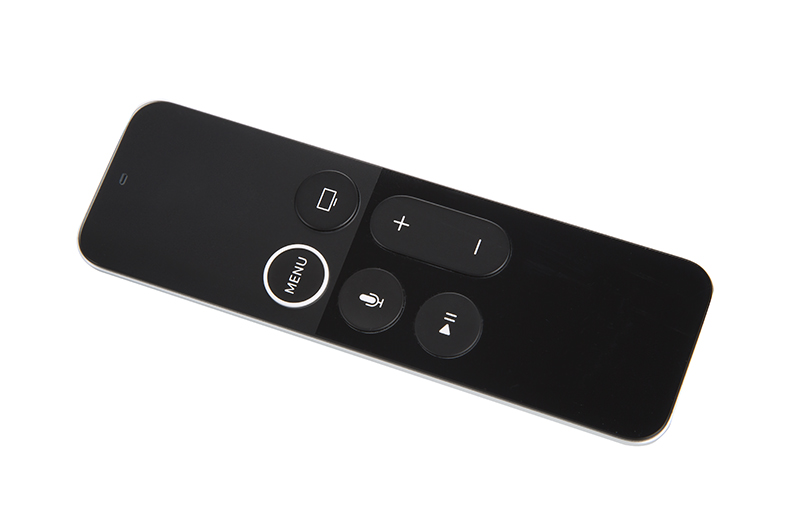
The search function has been expanded to cover more streaming services, including iPlayer, but Now TV content isn’t included in the results, which is a shame for subscribers.
If you’re more partial to controlling your TV the old fashioned way, you might want to use the remote control from the TV that’s connected to the Apple TV 4K, as the touchpad on the Apple remote is a bit skittish. Doing so means you’re not immediately ready to issue a voice command, though, and it’s testament to the usefulness of Siri on Apple TV that that’s a genuine shame.
Apple TVs in the UK now also get an app that's been available in the US for some time – rather confusingly called ‘TV’. This essentially consolidates all of the content available across all of the apps you’ve installed and have subscriptions to, and allows you to quickly dip back into the last thing you were watching or find something new to watch via a fairly intelligent algorithm that recommends content based on your favourites and recent activity.
It works pretty well and is surprisingly magnanimous, offering, for example, Arrival via Amazon Prime Video in the first instance, when it could direct you to the pay-as-you-go version on iTunes. The one big issue is that Netflix isn’t integrated into the TV app, and if that’s your primary streaming app, as it is for so many people, you’re going to find TV a bit lacking.
You may have noticed that we mentioned Amazon Prime Video – yes, it's finally on Apple TV, and it works beautifully. It’s even included in search results and the TV app.
The UK catch-up services hole has just about been plugged now, too, with BBC iPlayer having been joined by ITV Player, My5 and All 4.
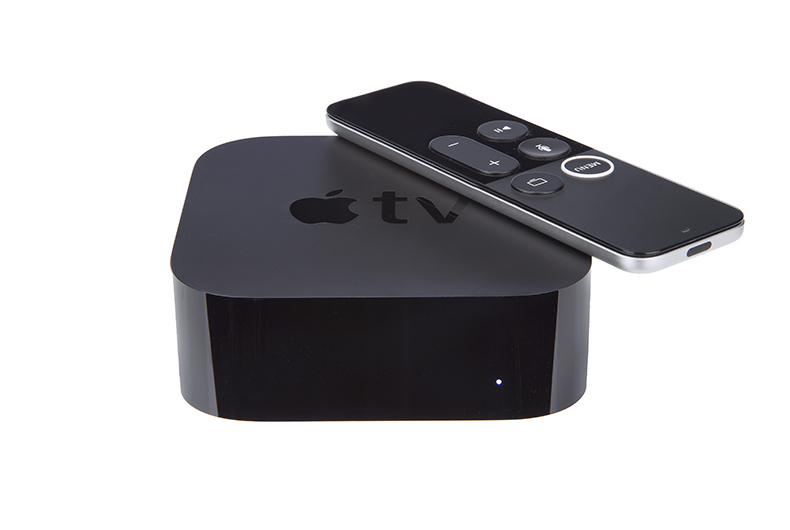
But hands-down, the new Apple TV 4K’s biggest selling point is its library of 4K HDR movies. The catalogue is expanding at an impressive rate and currently includes well over 200 films, including recent blockbusters such as Mission Impossible: Fallout, Deadpool 2 and A Quiet Place. The only other way to watch these films in 4K HDR is by buying the 4K Blu-rays.
Sky Q has a similar quantity of 4K films, with TV shows and sport added into the mix, but HDR isn’t featured at all, and you obviously need a Sky dish and subscription.
Apple TV’s simple pay-as-you-go model will be more appealing to many, particularly as the extra pixels don’t cost any extra money – most films can be bought for between £10-12 or rented for £5.50, the same price as the HD versions and loads cheaper than buying the 4K Blu-rays.
If you’ve already bought a film on iTunes that is subsequently upgraded on the store to 4K, you automatically get the new version at no extra cost. All of which is good news for those who want more affordable 4K content.
MORE: 4K Ultra HD Blu-ray – all the 4K discs on sale and coming soon
Performance

But not all 4K content is born equal, and an Apple TV 4K stream is no match for the equivalent UHD disc when it comes to picture quality. Play Deadpool on 4K Blu-ray and there’s an extra layer of crispness and detail in the foul-mouthed anti-hero’s red suit.
There’s a little more punch and insight into the darker areas of the picture too, which is an unavoidable consequence of streaming. With the alternative being downloading uncompressed 4K films onto a hard drive, it’s no surprise Apple chose streaming.
However, 4K movies streamed via iTunes look lovely in their own right. Compared to a Full HD stream, there’s a clear step-up in sharpness and definition, giving the image much more solidity and depth.
Detail is also lifted significantly, making clothing textures, such as the furs and leather in the early scenes of Wonder Woman, appear more natural, realistic and distinct.
But the addition of HDR is undoubtedly an even bigger upgrade, as it makes movies pop from the screen. Whites are pure and bright, colours are more vibrant and vivid, and blacks deeper and more solid. It’s simply a more exciting and enticing picture.
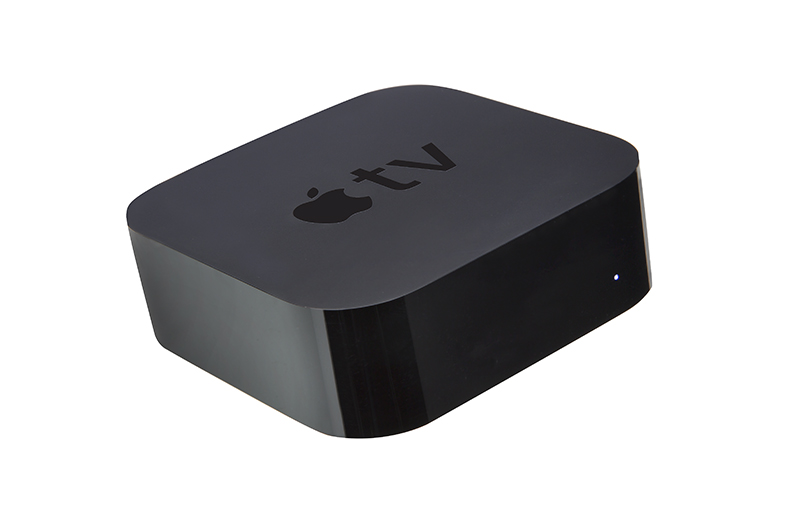
So far, we’re only really talking about HDR10 content, but the iTunes Store also carries many movies with Dolby Vision, a more advanced version of HDR that’s applied on a frame-by-frame basis and capable of even better results. Netflix has loads of Dolby Vision content now, too, and Amazon recently got in on the act with its Jack Ryan series.
If you’ve not experienced 4K HDR from Netflix before, you’re in for a treat. If you have, the performance is essentially the same as that provided by your TV. The extra power of the A10X chip doesn’t translate into an enhanced Netflix performance, but perhaps that’s not really a surprise.
That the Apple TV 4K no longer upconverts content to HDR really is cause to be thankful, as some older content looked artificially bright. Now you get your content in a more natural form. Everything is still upscaled to 4K, but if you’re watching on a 4K TV, that would happen somewhere in the chain anyway. Besides, the Apple TV 4K is an accomplished upscaler, boosting resolution to match your TV without everything looking peculiar or over-sharpened.

That Apple has gone as far as supporting not just HDR10, but Dolby Vision too, is cause for celebration, and the company is now taking a similar approach to audio, having recently added Dolby Atmos support.
The addition of this super-advanced, object-based audio format is a real boon for owners of serious sound systems, particularly as there's already a lot of content from the iTunes Store and Netflix (and a little from Amazon) with Atmos baked in.
The Atmos delivery here is impressively accurate and awesomely atmospheric (albeit with the caveat that a 4K Blu-ray sounds more impressive still), but whichever format you use for sound, the Apple TV 4K is a clear, weighty and precise performer, with greater punch and dynamic range than the more affordable video streamers that you might be also considering.
Verdict
When we first tested the Apple TV 4K back in October 2017, we agonised over the rating. On the one hand it delivered the best, biggest and most affordable library of 4K movies available, but the app gaps were impossible to ignore and its insistence on upconverting everything to HDR was a little disappointing.
But in the months since launch, Apple has addressed practically all of those complaints. The UK’s core catch-up apps are now present, Amazon Prime Video has finally joined the party, and content can now be output in its native frame rate and dynamic range – and with Dolby Atmos sound if you have the system to receive it.
That exclusive catalogue of 4K content continues to be the Apple TV 4K’s greatest strength, though, and it’s growing at a seemingly exponential rate, embarrassing rival services for choice as well as price.
The only rival that gets close to mounting a serious challenge to the Apple TV 4K is the new Amazon Fire TV Stick 4K, which is undeniably awesome for the money. But between the superior performance and unrivalled selection of 4K HDR movies, Apple's streamer more than justifies the extra outlay.
MORE:
AirPlay 2: Everything you need to know
What Hi-Fi?, founded in 1976, is the world's leading independent guide to buying and owning hi-fi and home entertainment products. Our comprehensive tests help you buy the very best for your money, with our advice sections giving you step-by-step information on how to get even more from your music and movies. Everything is tested by our dedicated team of in-house reviewers in our custom-built test rooms in London, Reading and Bath. Our coveted five-star rating and Awards are recognised all over the world as the ultimate seal of approval, so you can buy with absolute confidence.


